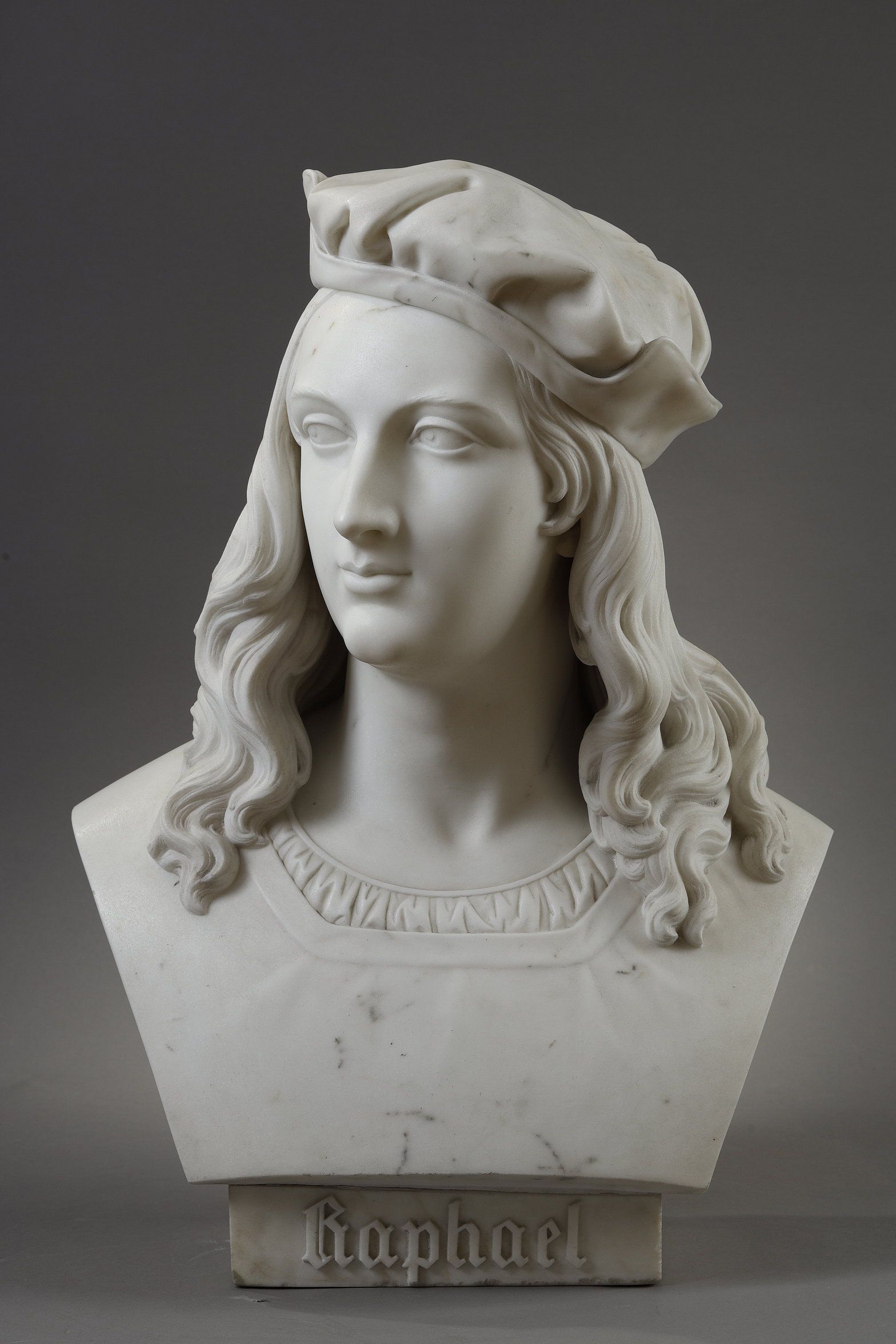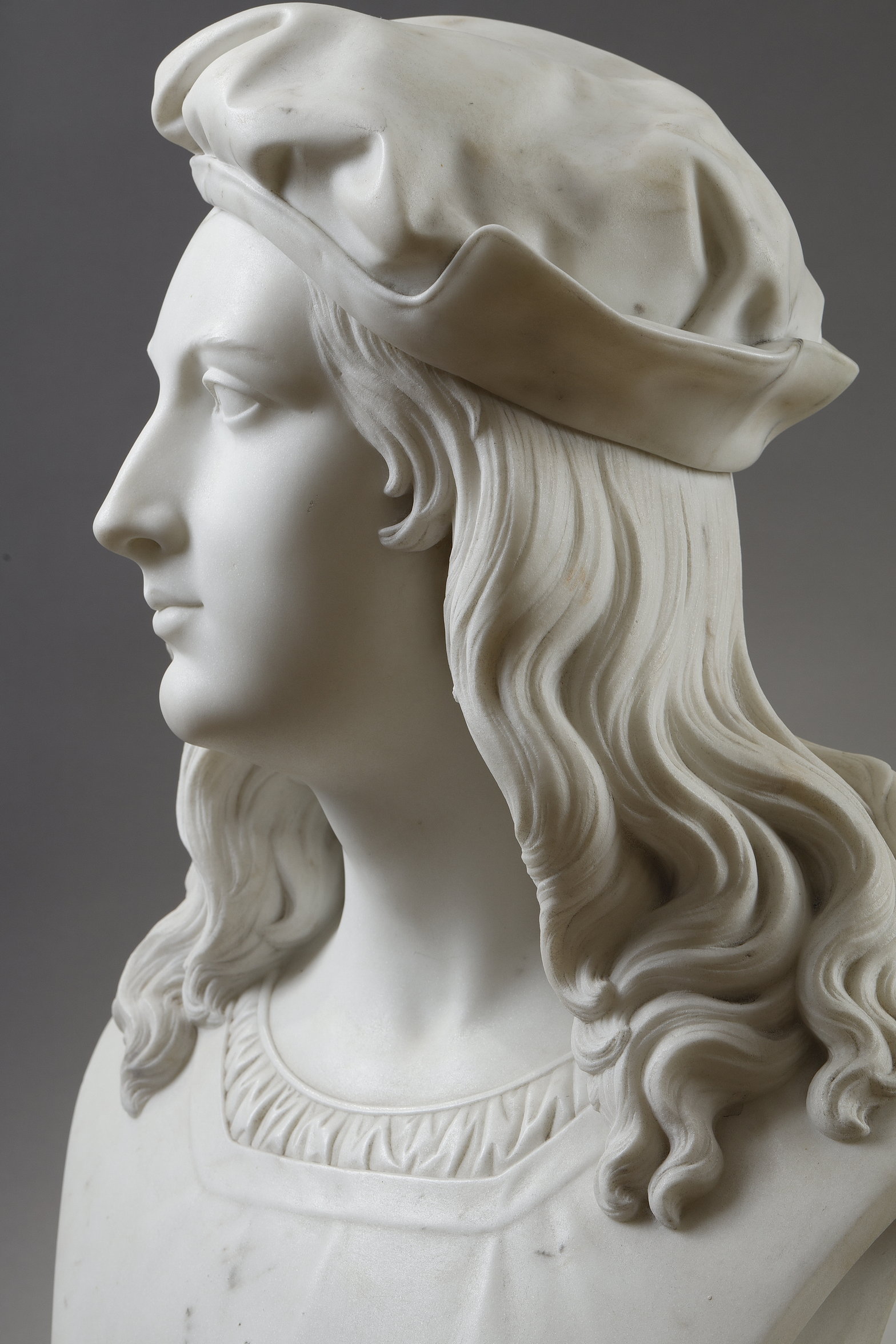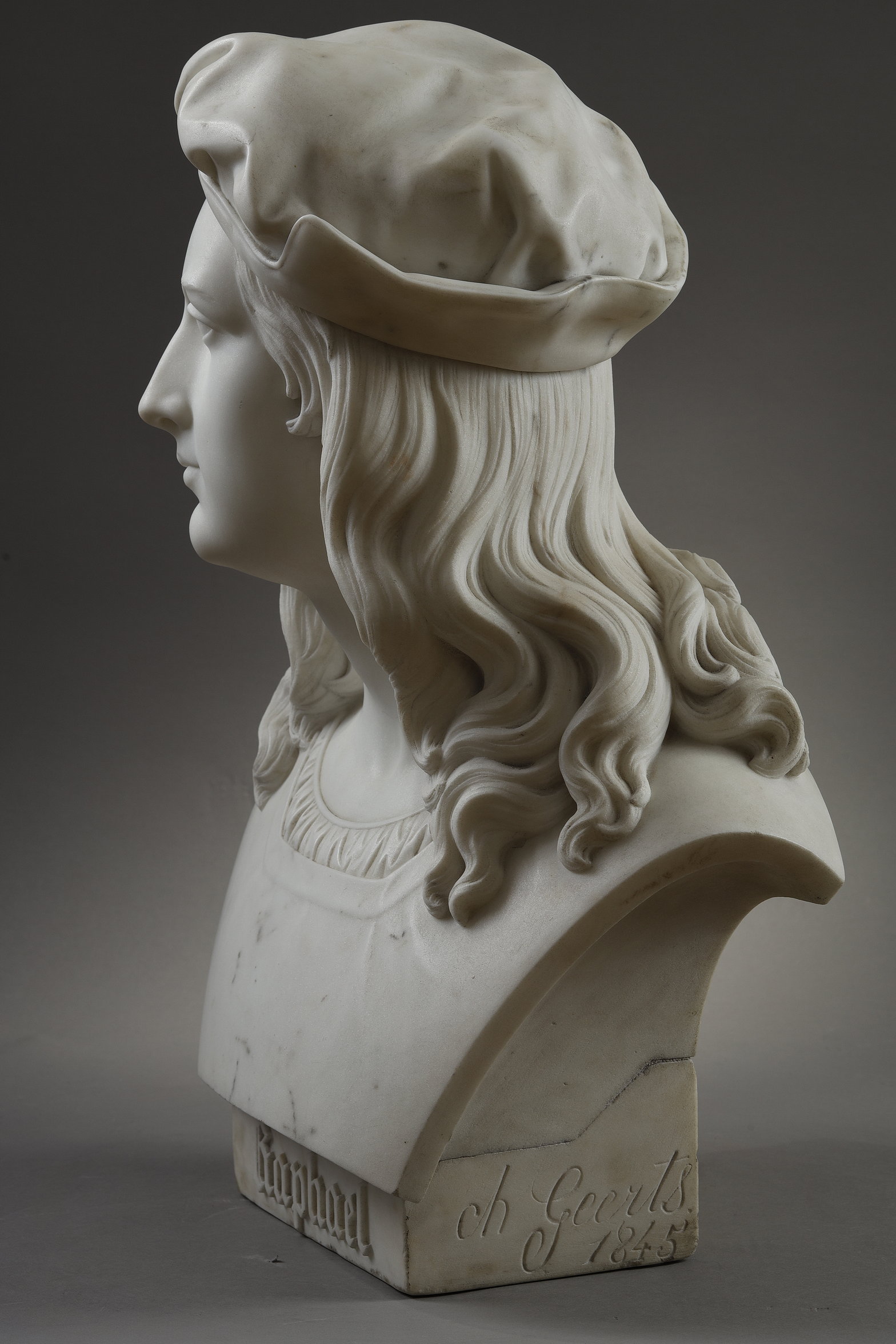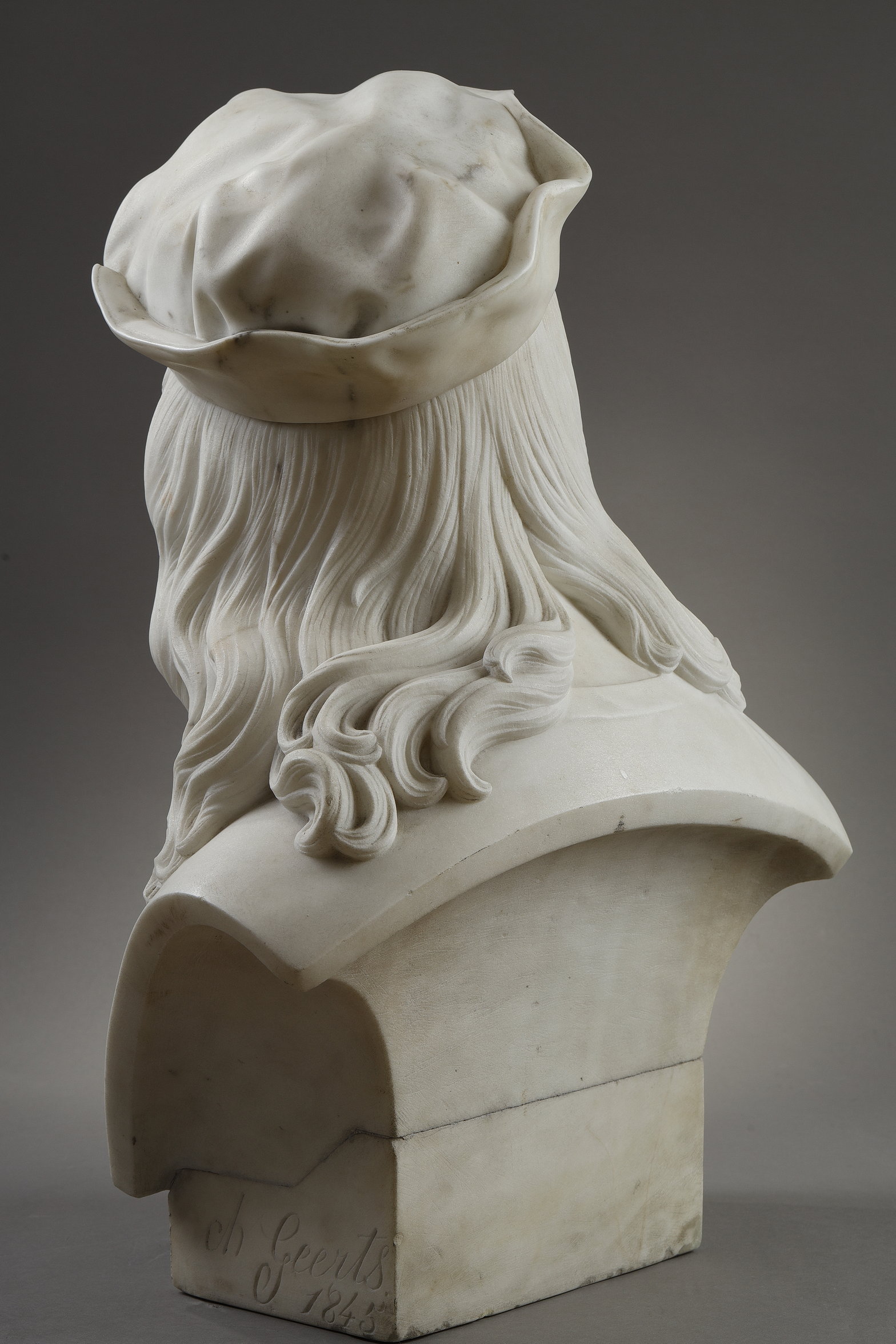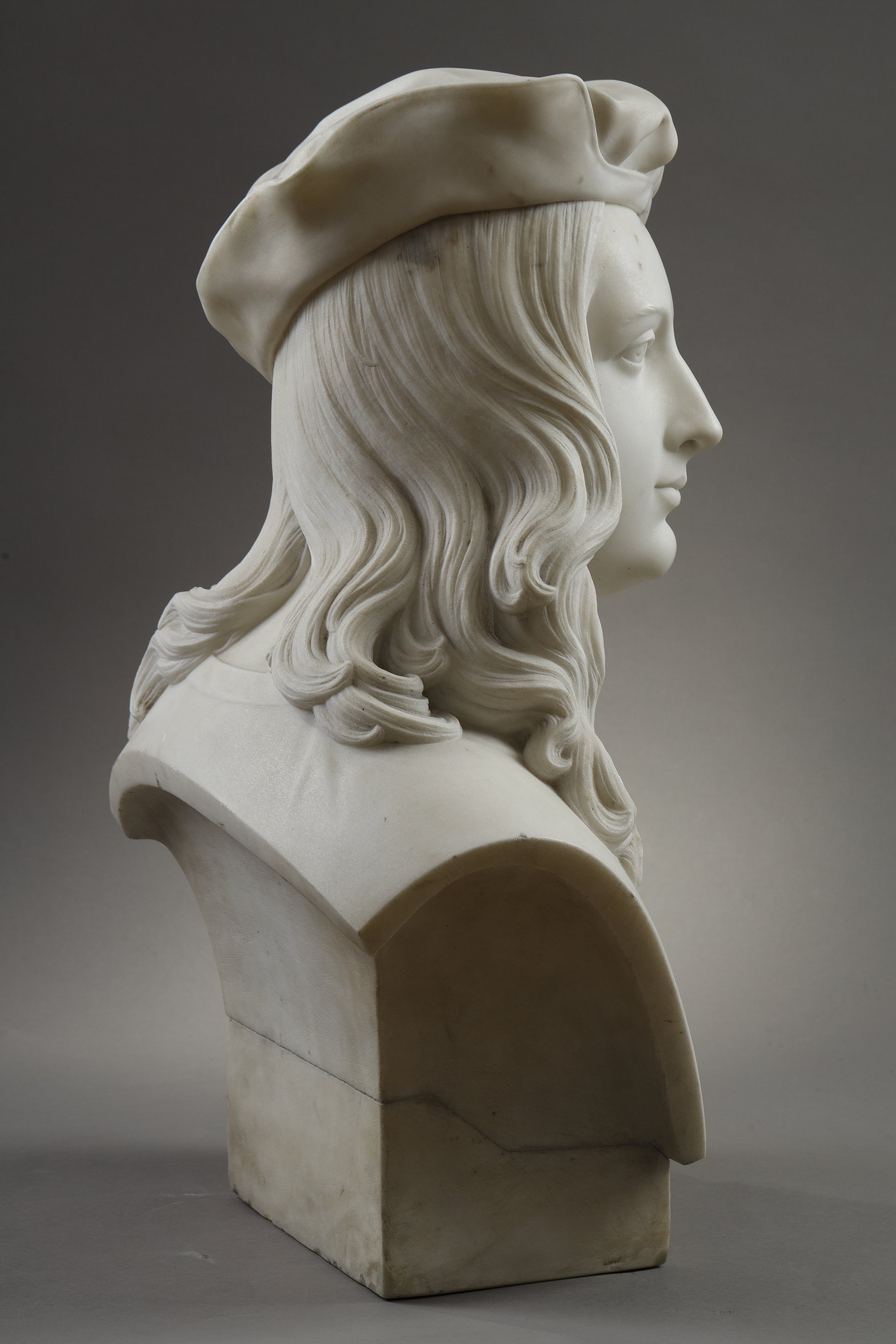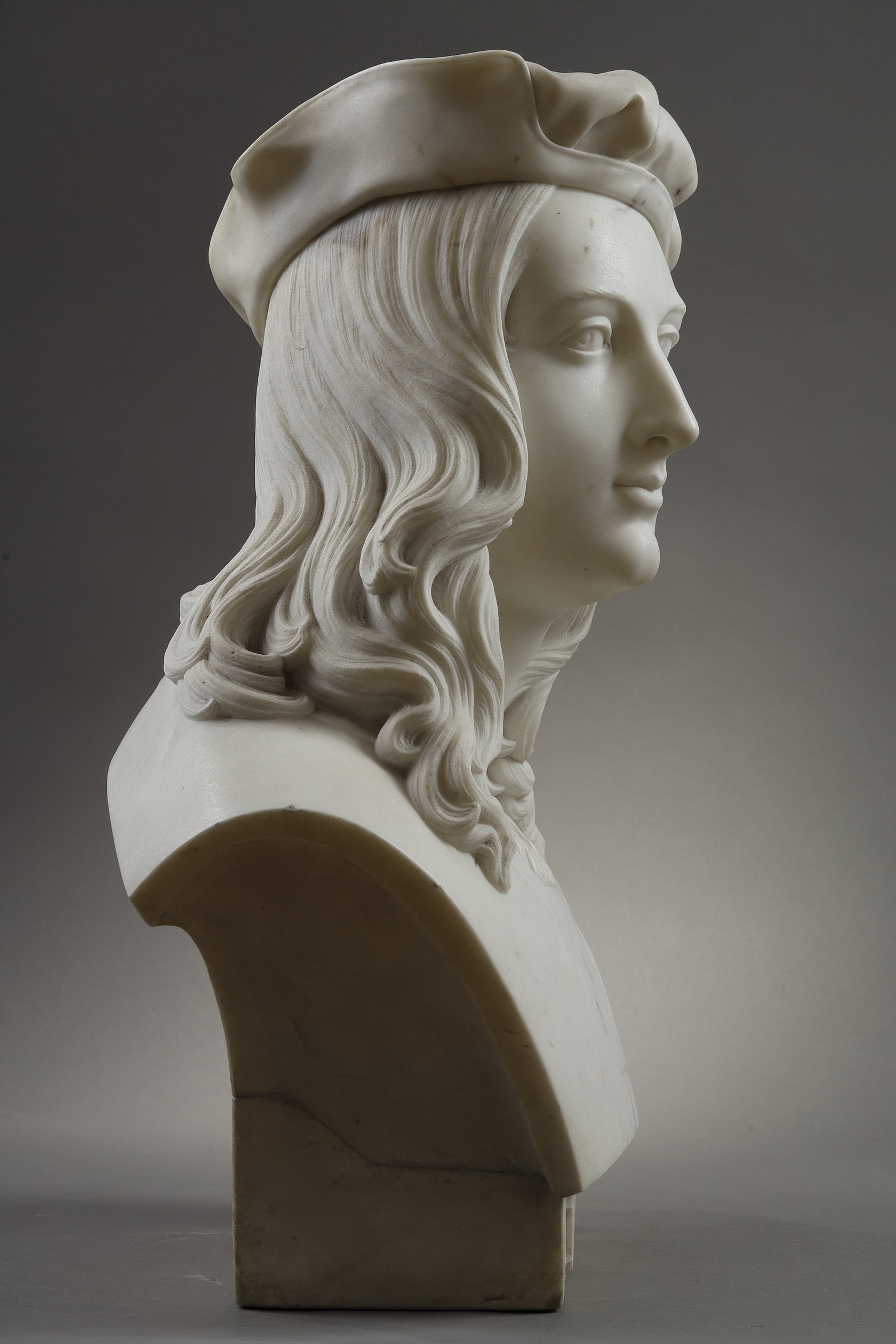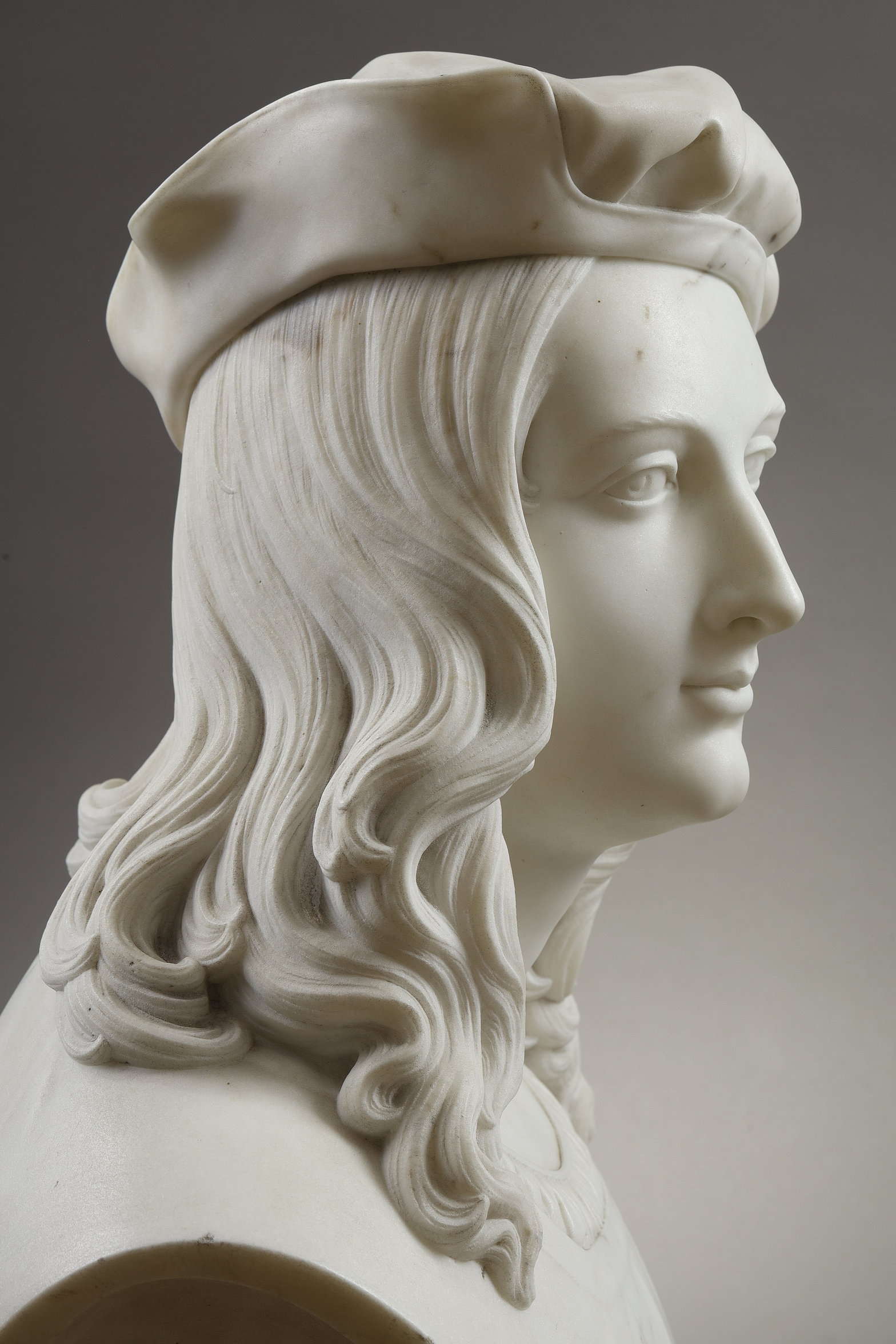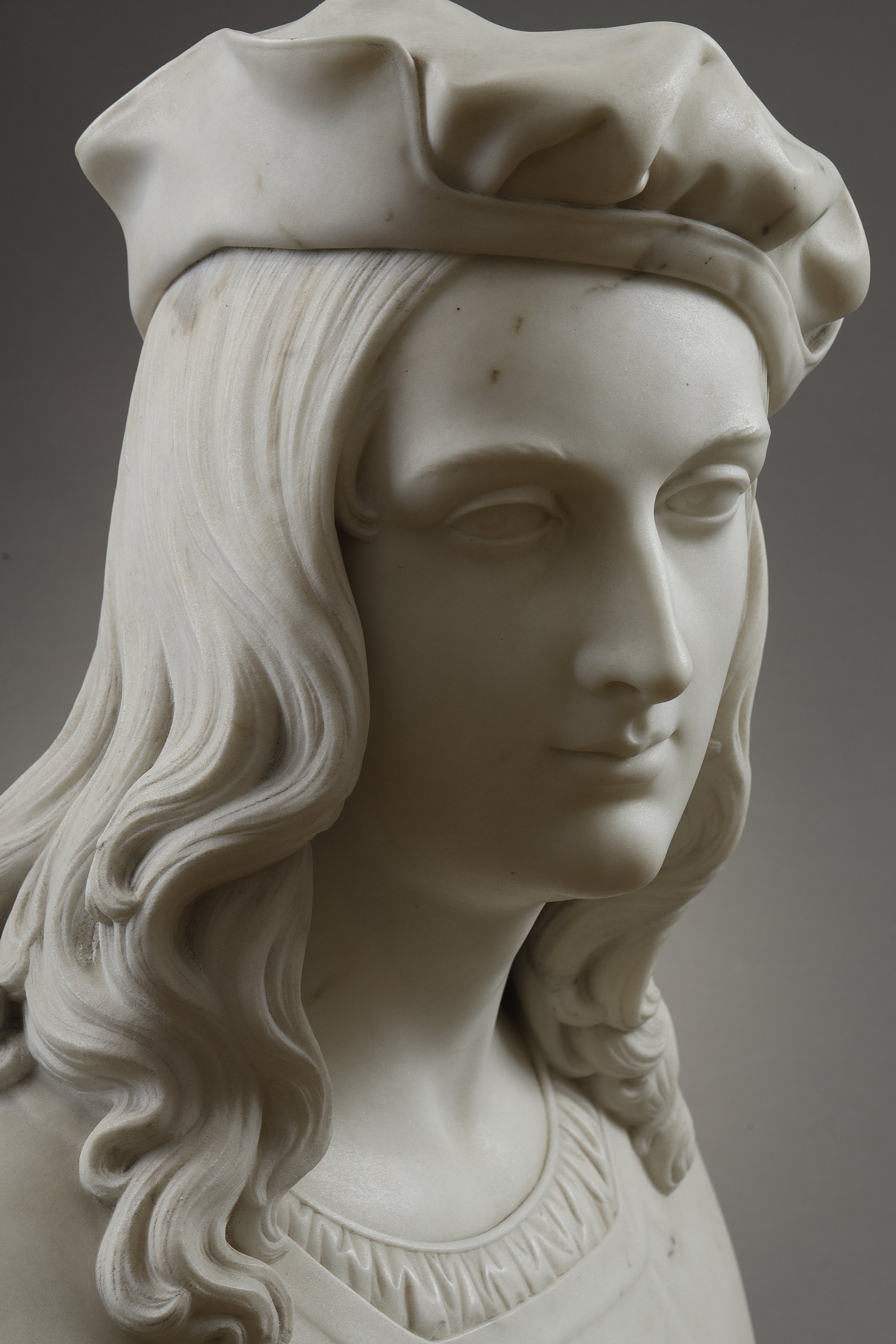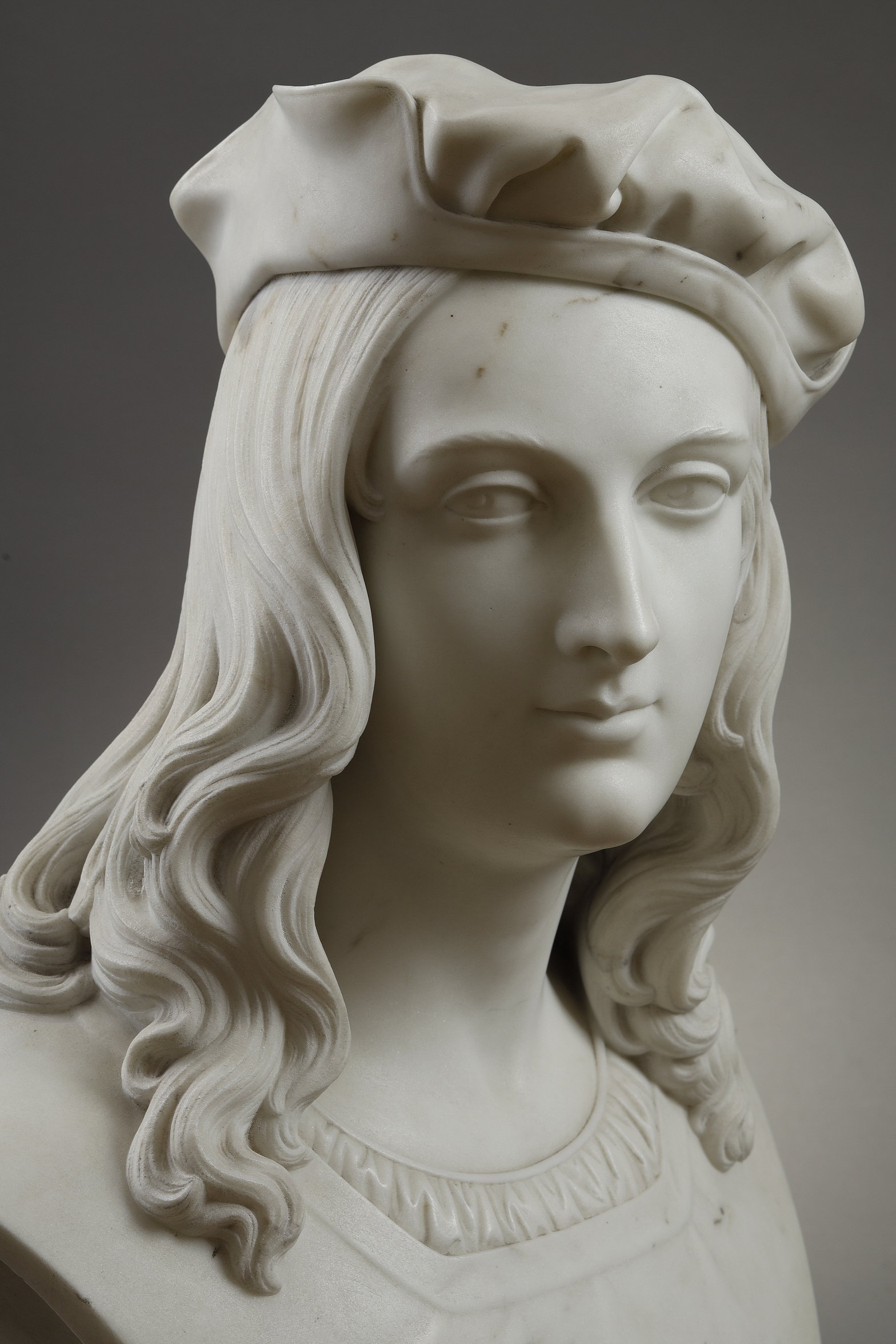This marble bust is a faithful reproduction of the original work commissioned by King Leopold I of Belgium and first presented at the Ghent Salon in 1836.
Executed in 1845, it demonstrates the exceptional finesse of Charles Geerts’ craftsmanship. The intricate curls of the subject’s hair, the precise folds of the garments, and the gentle modelling of the face all attest to the sculptor’s remarkable technical skill and artistic sensitivity.
More than a study in form, the work is a tribute to Raphael (1483–1520), one of the most celebrated artists of the Italian Renaissance. Revered for his refined brushwork and harmonious compositions, Raphael was admired by generations of artists, from Jacques-Louis David to Pablo Picasso. His Vatican frescoes remain iconic achievements in the history of Western art.
As a symbol of Renaissance ideals, Raphael represents the perfect balance between technical mastery and poetic grace. This bust reflects that legacy. The subject’s serene features and contemplative gaze convey a sense of intellectual depth and inner beauty, echoing the artist’s enduring influence.
In transforming a historic figure into a timeless icon, Geerts goes beyond portraiture. He channels the spirit of the Renaissance through marble, capturing not only Raphael’s likeness but also his artistic soul. The result is a powerful homage — a sculptural meditation on genius, beauty, and human potential.
This work stands as a testament to Geerts’ ability to merge neoclassical form with romantic sensibility, offering viewers both a masterful portrait and a poetic evocation of one of art history’s greatest names.

